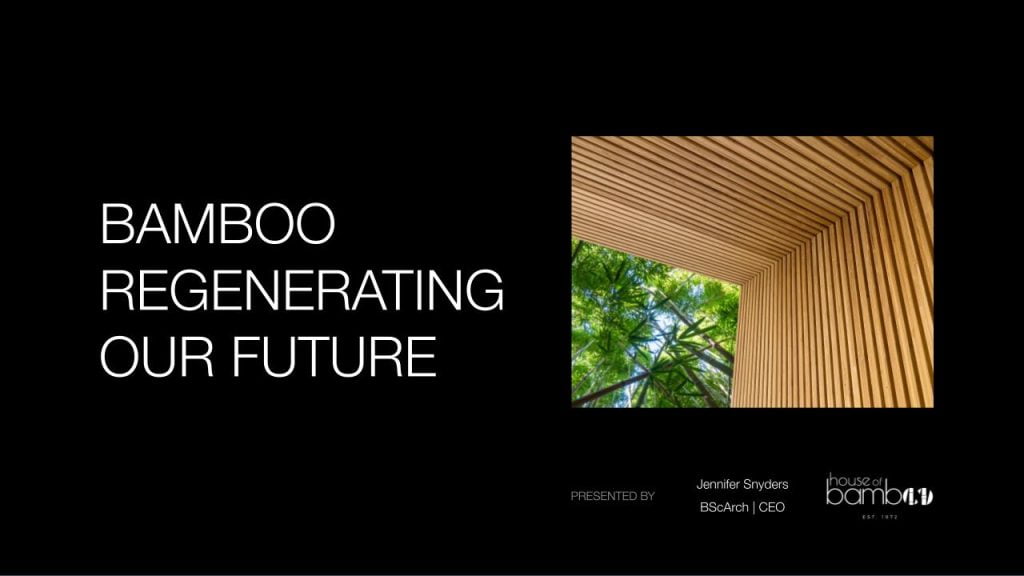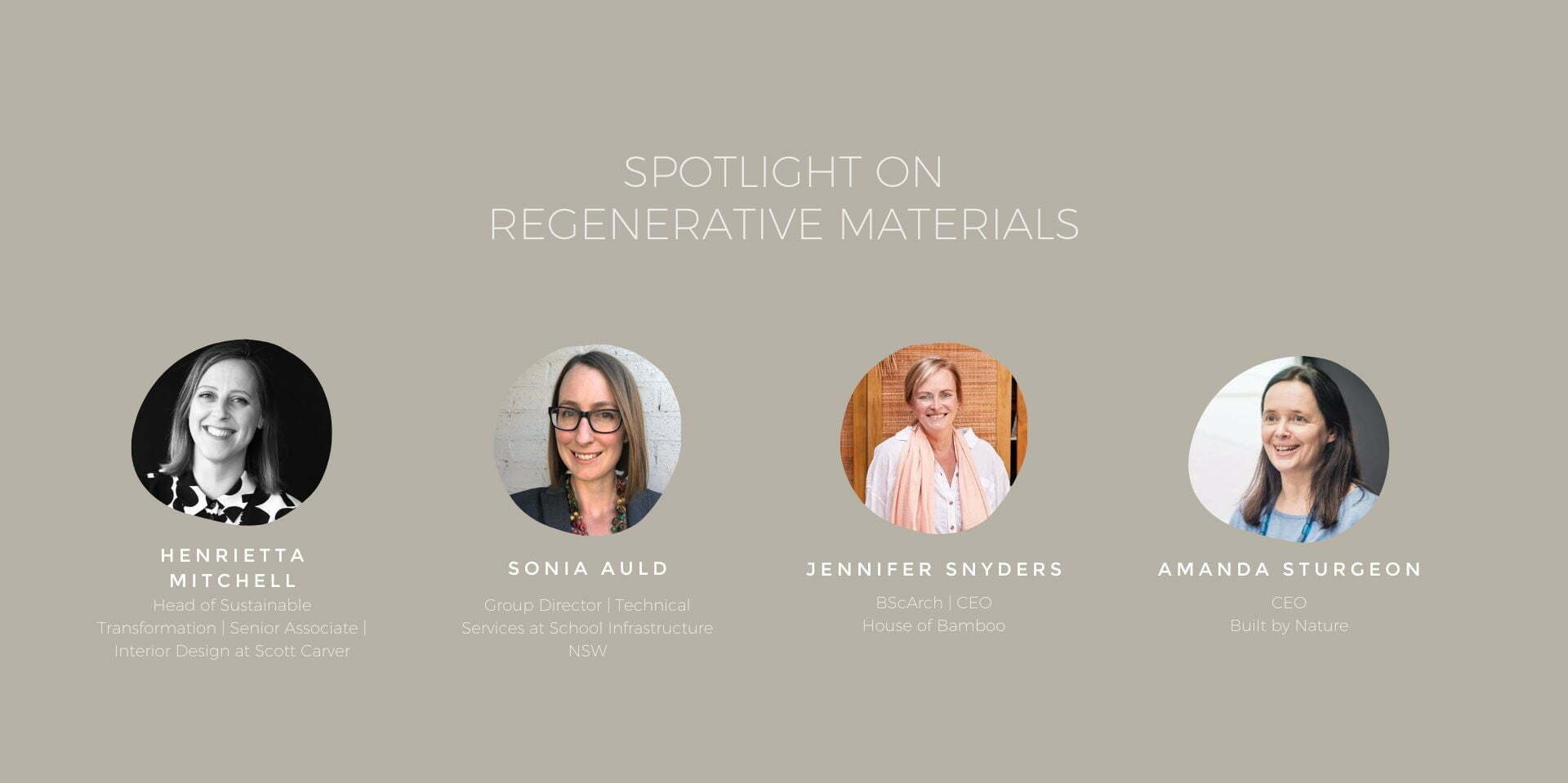Jennifer Snyders speaks at Spotlight on Regenerative Materials by MECLA
Our CEO and architect Jennifer Snyders shared some important thoughts as a speaker at the last Spotlight event of last year in December 2022, hosted by the Materials and Embodied Carbon Leaders Alliance (MECLA) Chair Hudson Worsley.
Short summary of BScArch Jennifer Snyders speech
MECLA says:
Jennifer Snyders, CEO of House of Bamboo, educated attendees on the versatility of bamboo and the barriers to use. For construction materials bamboo is harvested within 5-7 years, compared to pine or oak that take 30 and 60 years to grow too a similar height. Bamboo can replace a variety of emission intensive materials, it stores 4 times more carbon dioxide than trees and produces 35% more oxygen. It also has phytoremediating qualities, which enable it to leech contaminants out of soil and it can decrease soil erosion and prevent desertification.
When you harvest bamboo you cut 25% of culms, and leave 75% of the forest intact, cutting off the plant at one of the rings. Bamboo then regenerates itself, and doesn’t require pesticides or fertilisers. Bamboo has a lot of applications as bio energy, bio gas, pellets suitable for chickens and other livestock, and can be used as a fuel resource because of its extremely high lignin content.
Laminated and engineered bamboo is created by stripping the skin off the stalks, then crystalising sugar on it which helps with mold and prevents insect infestation. There is also strand woven bamboo, which is shredded and put a resin through it which creates a very dense material. Bamboo can be used as structural beams, in detailing, or as flooring. It has a multitude of applications, and House of Bamboo is working toward a bio-based glue for the material.
Bamboo isn’t a specified material in Australia for a few reasons. There is lots of misinformation, regulations and standards that force the product to adhere to timber standards despite it being a grass, education focuses on recognised materials as they can afford the advertising, sponsorship and research. Accreditation makes it cost prohibitive. And there is a lack of collaboration, for which Snyders calls for a united cooperation for industry to cross over and realise an end goal of supplying materials and delivering emission reductions because the planet cannot provide us with enough timber if we are going to meet our sustainability and emissions goals.
Currently, there is no bamboo industry in Australia, no recognition of bamboo as a building material, no plantation despite us having 1.7 million km2 of suitable land, and no government program to grow bamboo or develop industry.
But despite this, Jennifer assured that change is possible. Australia has the climate, the suitable land, and five different native and 200 bamboos already growing in the country.
Watch the whole presentation
The MECLA Spotlight on Regenerative Materials featured speakers from government and industry exploring how different existing materials can adapt, what emerging biophilic and regenerative materials are entering the market, and the role government can play in accelerating R&D and commercialisation.
Full list of speakers:
Sonia Auld – Group Director Technical Services at School Infrastructure NSW
Tina Fox – Senior Associate/Interior Design at Scott Carver
Isabella Peppard Clark – Architect at DesignInc Melbourne
Amanda Sturgeon – Built by Nature CEO
Jennifer Snyders – CEO at House of Bamboo
Canhui Chen – Lecturer at University of Swinburne

